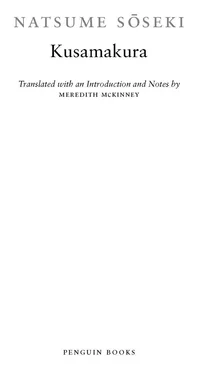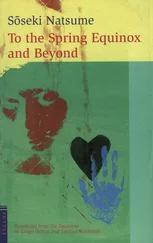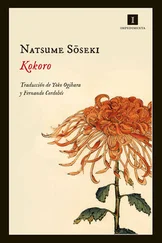Natsume Soseki - Kusamakura
Здесь есть возможность читать онлайн «Natsume Soseki - Kusamakura» весь текст электронной книги совершенно бесплатно (целиком полную версию без сокращений). В некоторых случаях можно слушать аудио, скачать через торрент в формате fb2 и присутствует краткое содержание. Жанр: Старинная литература, на английском языке. Описание произведения, (предисловие) а так же отзывы посетителей доступны на портале библиотеки ЛибКат.
- Название:Kusamakura
- Автор:
- Жанр:
- Год:неизвестен
- ISBN:нет данных
- Рейтинг книги:4 / 5. Голосов: 1
-
Избранное:Добавить в избранное
- Отзывы:
-
Ваша оценка:
- 80
- 1
- 2
- 3
- 4
- 5
Kusamakura: краткое содержание, описание и аннотация
Предлагаем к чтению аннотацию, описание, краткое содержание или предисловие (зависит от того, что написал сам автор книги «Kusamakura»). Если вы не нашли необходимую информацию о книге — напишите в комментариях, мы постараемся отыскать её.
Kusamakura — читать онлайн бесплатно полную книгу (весь текст) целиком
Ниже представлен текст книги, разбитый по страницам. Система сохранения места последней прочитанной страницы, позволяет с удобством читать онлайн бесплатно книгу «Kusamakura», без необходимости каждый раз заново искать на чём Вы остановились. Поставьте закладку, и сможете в любой момент перейти на страницу, на которой закончили чтение.
Интервал:
Закладка:
I slide the right-hand screen door open onto the balcony and look out, in search of echoes of last night’s scene. The tree that I judged to be an aronia is indeed so, but the garden is smal er than I thought. Five or six stepping-stones are buried in a carpet of green moss; it would feel very nice to walk there barefoot. To the left is a cliff face, part of the mountain beyond, with a red pine slanting out over the garden from between rocks.
Behind the aronia is a smal clump of bushes, and beyond a stand of tal bamboo, its ninety feet of green drenched in sunlight. The scene to the right is cut off by the roofline of the building, but judging from the lay of the land, it must slope gently down toward the bathhouse.
Casting my eyes farther, I see that the mountain slopes down to a hil , which in turn sinks to an area of flat land about four hundred yards wide.
This in turn dives below sea level, to emerge abruptly from the water about forty miles out, in the form of Mayajima, a smal island that I guess to be less than fifteen miles in circumference. Such is the geography of the Nakoi area. The hot spring inn is tucked in against the mountainside, its garden half-embracing the cliff face. The building is a two-storied one, but here at the back, owing to the slope, it becomes a single floor. If I dangled my feet from this balcony, my heels would brush the moss. It makes perfect sense that the previous evening I thought the place to be strangely devised, as I clambered in perplexity up and down its steep staircases.
Now I open the window to the left. Before me is a wide rock, natural y hol owed out in the middle; the reflection of a wild cherry tree lies steeping in the stil pool of water accumulated there from the recent spring rain. Two or three clumps of dwarf bamboo are elegantly positioned to soften the angle of the rock. Beyond stands a hedge of what looks like red-berried kuko bushes; the sound of occasional passing voices suggests that directly beyond the hedge lies the steep road that climbs from the beach to the hil . The gentle southward slope on the farther side of the road is planted with a grove of mandarin trees, and at the edge of the val ey another large stand of bamboo shines white in the sun. I have never realized til now that bamboo leaves give off a silver light when seen from a distance. A pine-clad mountainside rises above the bamboo grove, with five or six stone steps leading up between the pines’ red trunks, so clearly visible I feel I can reach out and touch them. There must be a temple there.
I next open the sliding door that leads off the corridor to my room and go out onto the porch beyond. The railing runs around four sides of an inner garden, and across it, in the direction from which I guess the sea would be visible, stands a second-floor room. From the railing, I can see that my own room is level with this second floor—a tasteful arrangement. Given that the bathing area is below ground level, I could be said to be ensconced in a room at the top of a three-tiered tower.
The building is a large one, but aside from the room opposite, and another that is level with my railing around to the right, almost every space that looks likely to be a guest room (I know nothing of the living area or kitchen) is closed up. There must be virtual y no guests here apart from myself.
The outer wooden shutters remain closed over the sealed rooms even during the day, but once opened, it seems they aren’t closed again even at night. Perhaps the front door is not locked at night either. It’s an ideal place for me to happen upon in my journey to savor artistic “nonemotion.â€
By now it’s nearly twelve, but there is stil no sign of my meal. I’m beginning to feel distinctly hungry, but I set about mental y identifying myself with the hermit poet in his words “vast empty mountains, no one to be seen,†and manage to induce a state in which I feel not the least regret at having to skimp a little.3 Drawing a picture feels like too much trouble just now, and as for coming up with a poem, my mind is already immersed in the poetic—to actual y compose something would be merely a waste of breath. Nor do I have any inclination to undo the box of two or three books that I’ve brought along, tied to my tripod, and read. I feel perfect happiness simply lol ing here on the balcony in the company of the shadow cast by the blossoms, my back toasting in the warm spring sunlight. To think would be to sink into error.
Movement seems perilous. I would cease even to breathe if I could. I want to live like this for a whole fortnight, motionless, like a plant rooted deep in the floor beneath me.
At last footsteps are heard coming along the corridor and climbing the stairs. Listening, I realize that two people are approaching. The footsteps stop before my room, then one person wordlessly retreats. The sliding door opens, and I guess it wil be the woman I saw earlier that morning, but in fact it’s the maid of the previous evening who enters. I register a touch of disappointment.
“I’m sorry this is so late.†She sets down the tray table containing my lunch. There is no explanation for the lack of breakfast. The tray contains a plate with a gril ed fish and a garnishment of greenery, and when I lift the lid of the bowl beside it, a red and white prawn is revealed nestling there in a bed of fresh fern shoots. I gaze into the bowl, savoring the colors.
“Don’t you like it?†asks the maid.
“No, no, I’m just about to have it,†I reply, but in fact it looks too beautiful to eat. I once read somewhere an anecdote about the artist Turner at a banquet, remarking to his neighbor as he gazed at the salad piled on the plate before him that this cool fresh color was the sort he himself used. I would love to show Turner the color of these fern shoots and prawn. Not a single Western food has a color that could be cal ed beautiful—the only exceptions I can think of are salad and radishes. I’m in no position to speak of its nutritional value, but to the artist’s eye it is a thoroughly uncivilized cuisine. On the other hand, artistical y speaking, everything on a Japanese menu, from the soups to the hors d’oeuvres to the raw fish, is beautiful y conceived. If you did no more than gaze at the banquet tray set before you at an elegant restaurant, without lifting a chopstick, and then go home again, the feast for the eyes would have been more than sufficient to make the visit worth your while.
“There’s a young lady in the household, isn’t there?†I inquire as I put down the bowl.
“Yes.â€
“Who is she?â€
“She’s the young mistress.â€
“Is there an older mistress here as wel ?â€
“She died last year.â€
“What about the master?â€
“Yes, he’s here. She’s his daughter.â€
“You mean the young lady?â€
“Yes.â€
“Are there any other guests?â€
“No one.â€
“I’m the only one?â€
“Yes.â€
“How does the young mistress spend her days?â€
“Wel , she sews . . .â€
“What else?â€
“She plays the shamisen. â€
This is a surprise. Intrigued, I continue. “And what else?â€
“She visits the temple,†replies the maid.
This is also surprising. There’s something peculiar in this visiting temples and playing the shamisen .
“She goes there to pray?â€
“No, she visits the priest.â€
“Is the priest learning the shamisen, then?â€
Читать дальшеИнтервал:
Закладка:
Похожие книги на «Kusamakura»
Представляем Вашему вниманию похожие книги на «Kusamakura» списком для выбора. Мы отобрали схожую по названию и смыслу литературу в надежде предоставить читателям больше вариантов отыскать новые, интересные, ещё непрочитанные произведения.
Обсуждение, отзывы о книге «Kusamakura» и просто собственные мнения читателей. Оставьте ваши комментарии, напишите, что Вы думаете о произведении, его смысле или главных героях. Укажите что конкретно понравилось, а что нет, и почему Вы так считаете.












